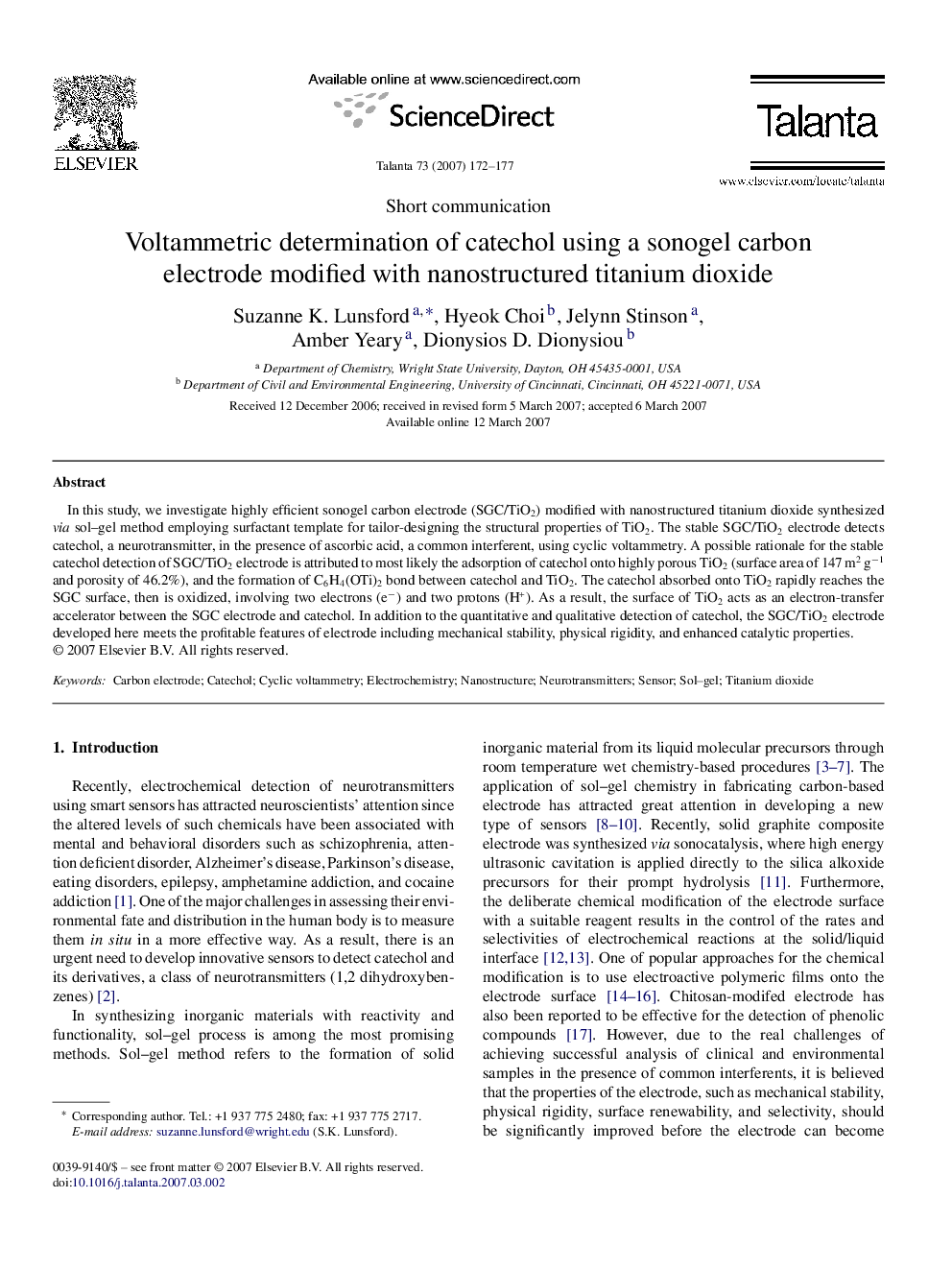| Article ID | Journal | Published Year | Pages | File Type |
|---|---|---|---|---|
| 1244869 | Talanta | 2007 | 6 Pages |
In this study, we investigate highly efficient sonogel carbon electrode (SGC/TiO2) modified with nanostructured titanium dioxide synthesized via sol–gel method employing surfactant template for tailor-designing the structural properties of TiO2. The stable SGC/TiO2 electrode detects catechol, a neurotransmitter, in the presence of ascorbic acid, a common interferent, using cyclic voltammetry. A possible rationale for the stable catechol detection of SGC/TiO2 electrode is attributed to most likely the adsorption of catechol onto highly porous TiO2 (surface area of 147 m2 g−1 and porosity of 46.2%), and the formation of C6H4(OTi)2 bond between catechol and TiO2. The catechol absorbed onto TiO2 rapidly reaches the SGC surface, then is oxidized, involving two electrons (e−) and two protons (H+). As a result, the surface of TiO2 acts as an electron-transfer accelerator between the SGC electrode and catechol. In addition to the quantitative and qualitative detection of catechol, the SGC/TiO2 electrode developed here meets the profitable features of electrode including mechanical stability, physical rigidity, and enhanced catalytic properties.
